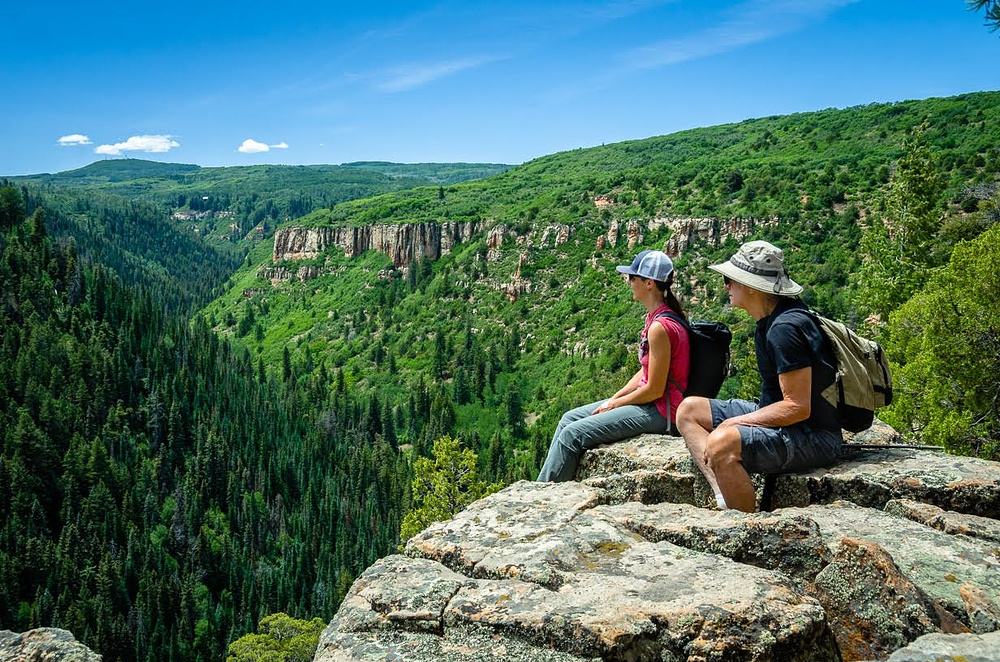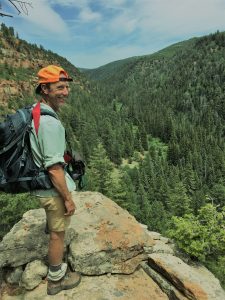- An Alliance For Community Action
- (970) 256-7650
- info@WesternColoradoAlliance.org
Kelso Mesa up on roadless chopping block
by Jim Riddell, Grand Junction
What comes to mind when you think of Roadless Areas? My first thought is: uninterrupted, undivided, undisturbed. Then my next thought is, I can go wherever I want! With no roads to tell me where I “should” go, I can just head off in any ol’ direction. I bet the elk and bears and marmots and birds feel the same way, too. Roads divide things.
Around here, our roadless areas usually have cliffs and canyons or jagged mountain spires or thick tangles of brush. They’re the places people couldn’t easily drive to, so they didn’t. They’re rare. And those that haven’t been protected by the US Congress are always at risk.
It doesn’t take long to make a road. It takes a LOOOONG time (and money) to unmake one.
Pretty much right here in our backyard, near the center of the Uncompahgre Plateau, we have a special place—a Roadless Area few know about, which some of us worry we may be losing. We refer to it as Kelso Mesa, and it’s been managed for decades by the US Forest Service as roadless. It’s at that in-between altitude (roughly 6,700 – 9,000 ft), where very few acres are currently protected from development. This parcel holds approximately 36,000 acres. For now, at least.
Not as dry and sparsely vegetated as the BLM land below it, it begins where the first scattered Ponderosas appear among the piñon-juniper, and rises through Douglas-fir and Gambel oak to aspens, spruce and lush grassy meadows. Below stunning red canyon walls up to 600 feet high, the creek bottoms hold a strain of Colorado Cutthroat Trout genetically pure enough to send fisheries people into ecstasy, where magnificent elk and bear roam, while hawks and ravens circle overhead.
There are almost no trailheads, and the feel of the place is wonderfully simple. Broad, sweeping vistas, intimate canyons, meadows and dense stands of trees; much of it steep enough to make foot travel difficult if not impossible and even the drive to get to the edge requires a commitment. But it’s worth it. It doesn’t take long to know that you’re not in civilization anymore.
But the Forest Service is recommending a large chunk of it be designated for “Backcountry with Temporary Roads.” Why?
They told us it’s because they’ve already used one strip of it for “vegetative treatment” for firebreak and to increase browse for deer and elk, and they want to keep doing it. So it’s not as wild as it was.
I think it would be better if they did that somewhere else. Let’s let Nature do her own thing on this one.



